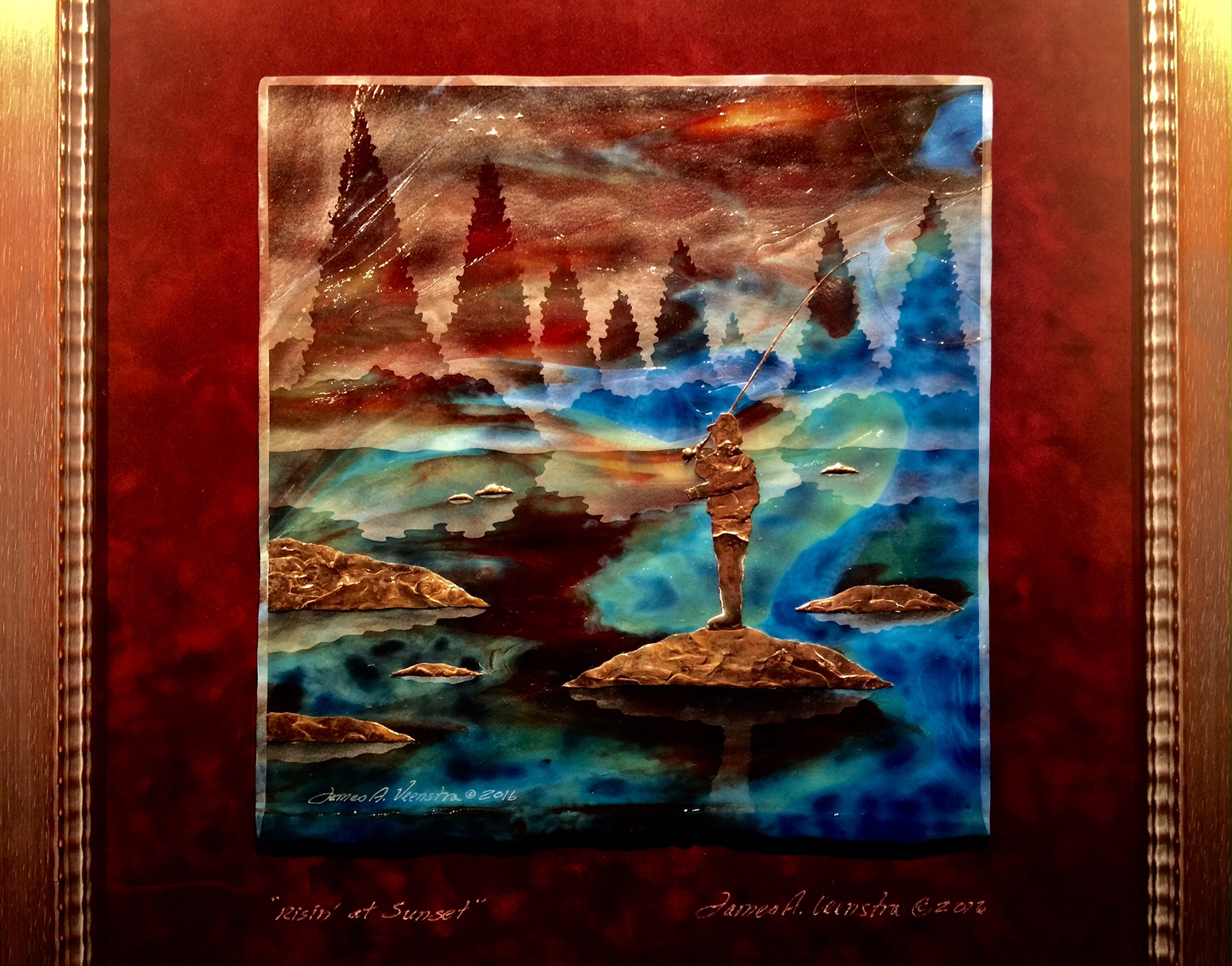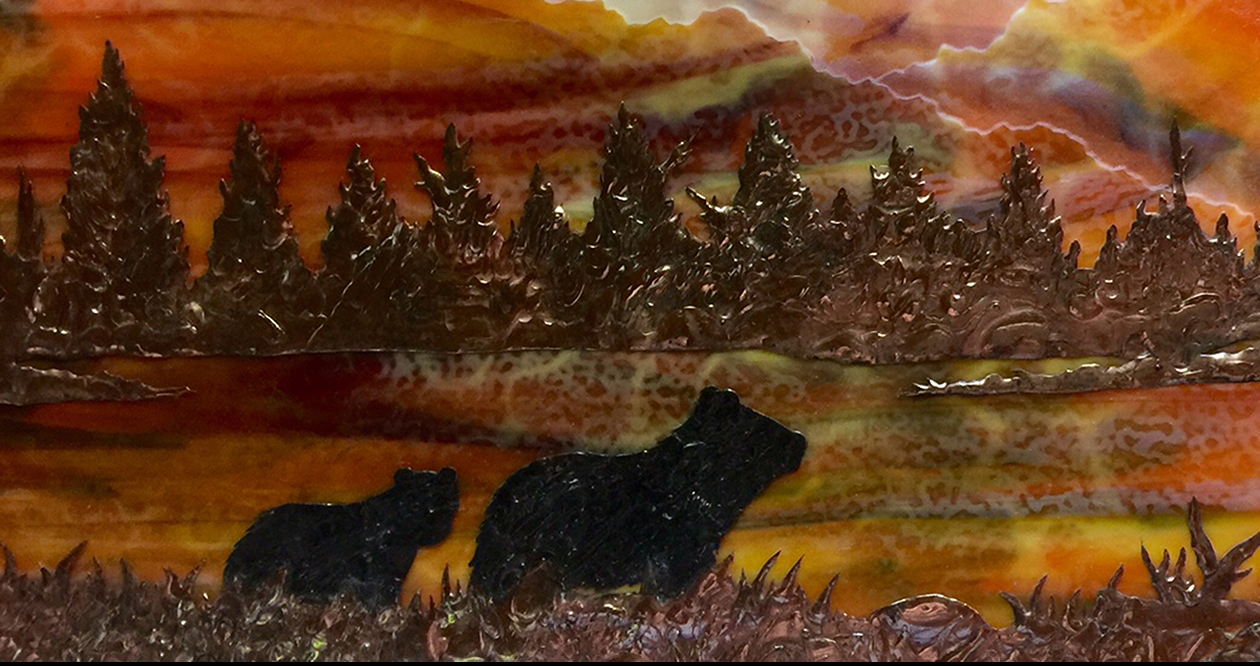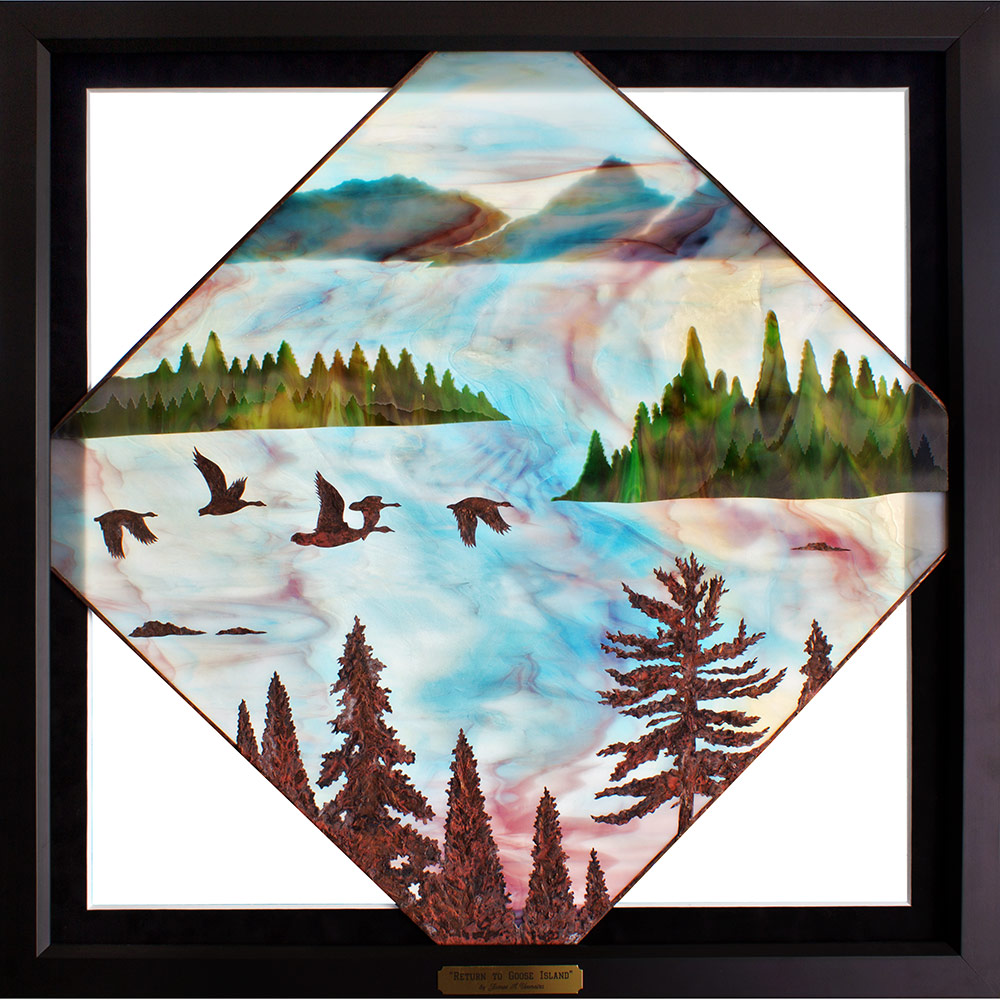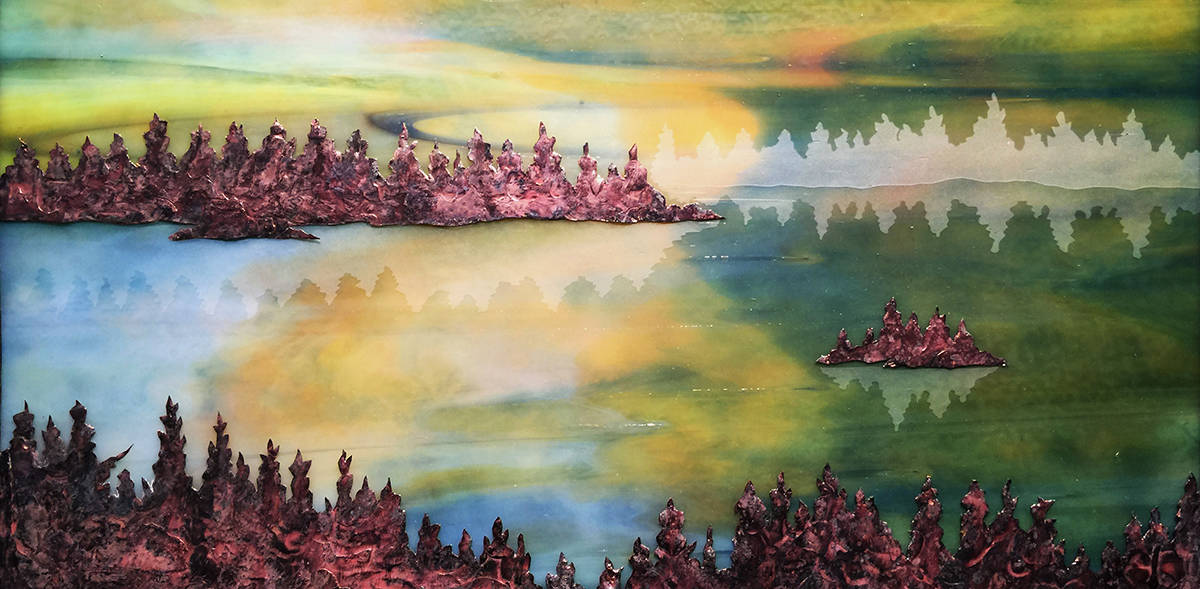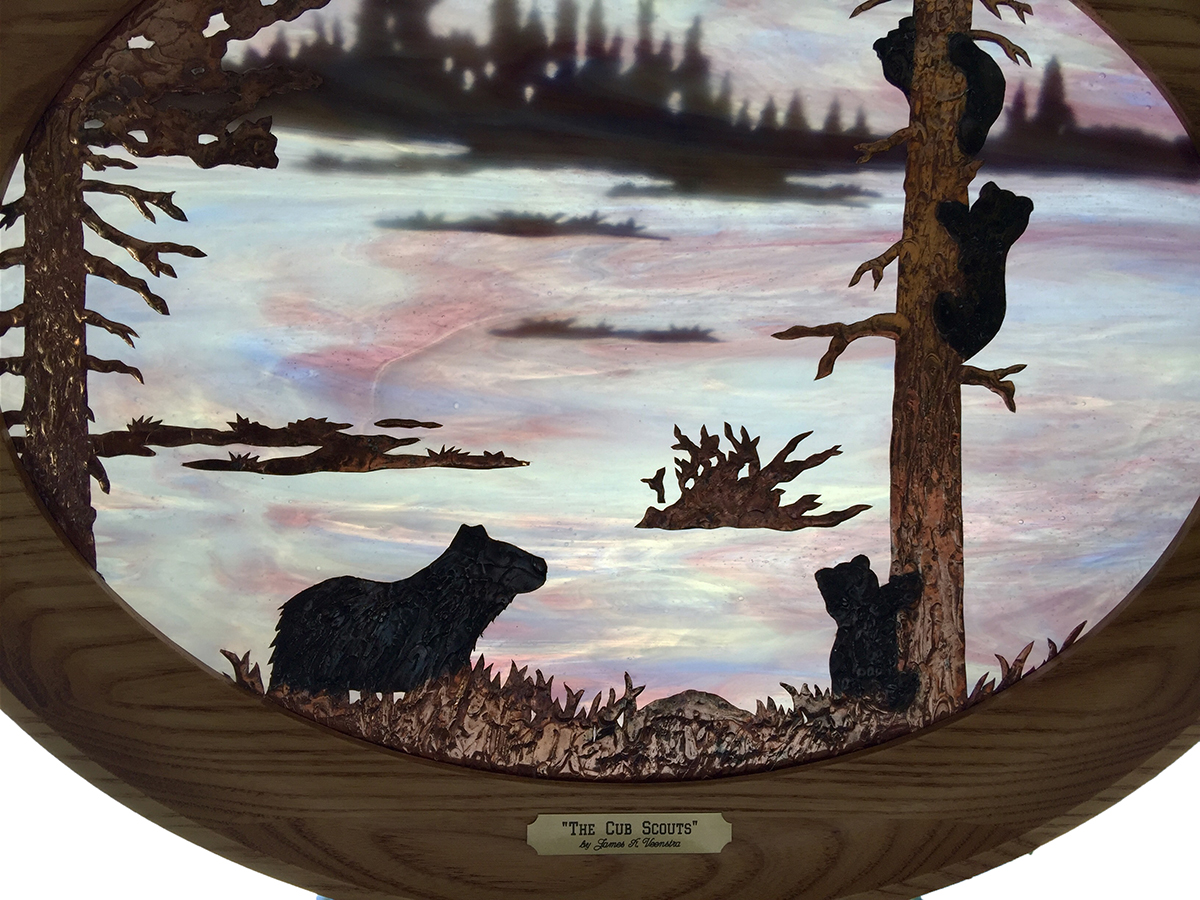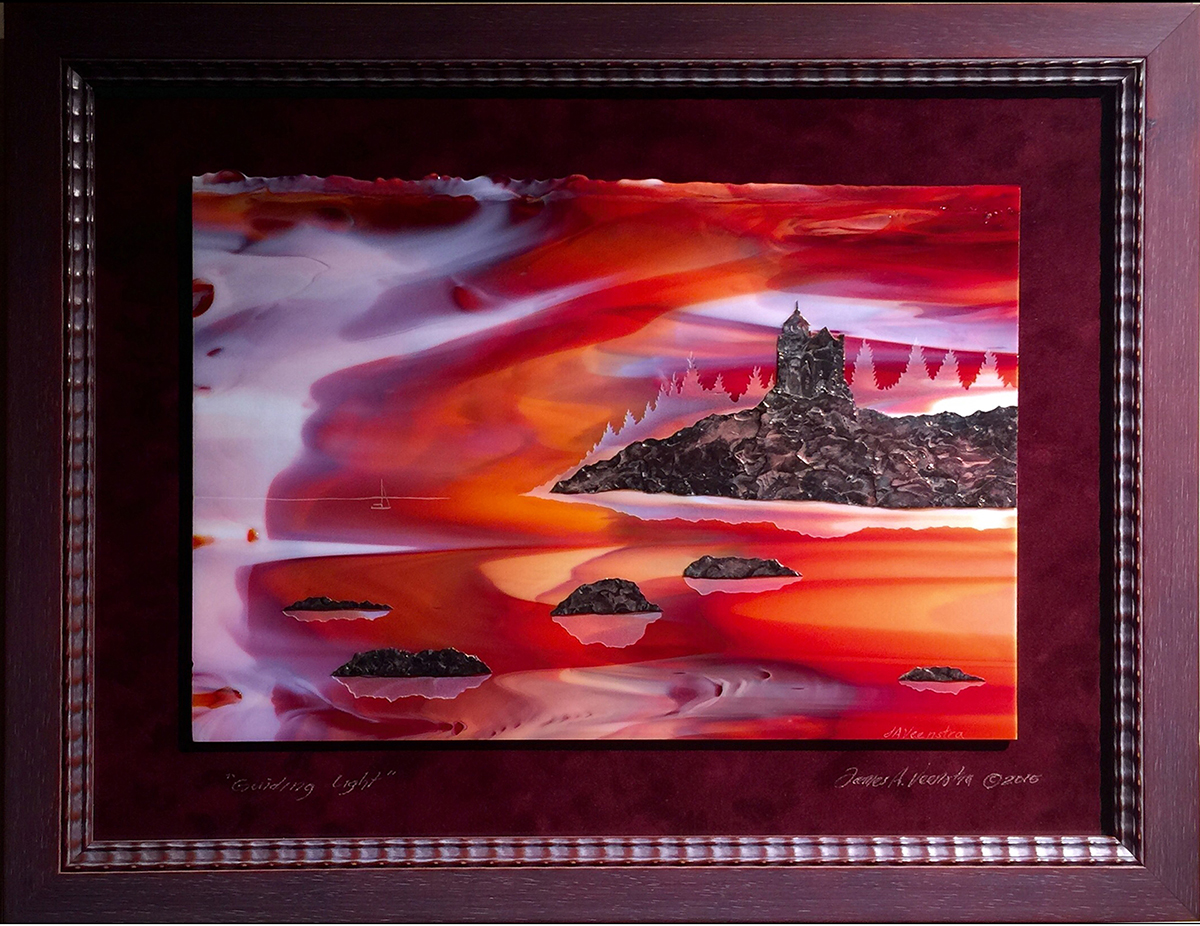Sculpting molten metal and copper directly on art glass is a technique developed by Veenstra which creates a silhouette of molten and sculpted copper fused on a background of stunning molten sheet art glass, representing an amazing sunset/sunrise scene. The molten metal is hand worked and a patina process is utilized on one or both sides of the glass to create a three dimensional image. When light enters from the back side of the glass, it is blocked by the background metal and when viewed from the front, the appearance is that of a distant shore or landscape feature. Veenstra utilizes just the right glass to represent the colors, patterns, and textures to compliment his original design. These pieces may be framed in various ways and are designed to either hang on a wall with primarily front lighting, or in windows and have natural sun light pass through them, resulting in a very dynamic piece of art that looks different throughout the day as lighting changes. All of these metal and glass pieces, especially when complimented by detailed sandblast carving and etching, take on different looks from different angles. Applications may include those where artificial back lighting is added, such as in cabinetry or built in walls.
About the Sculpted Copper Technique
Lighting conditions determine how strong the shadows and backgrounds are, and the overall look of the piece changes with the light cycle of the day.
Each piece goes through amazing transitions of color and shadow as the variable light of day changes. Copper images on both sides of the glass cause the illusion of a distant landscape (trees, mountains etc.). As the light of day diminishes, the distant landscape scene fades away, and disappears when light no longer passes through the glass. At that point, the scene overlain on the front side of the glass is apparent, not so much as a silhouette, but as a sculpted copper scene. The overall rendition, yields a very dynamic art form which changes and has a different look, depending on the lighting conditions.
This same process can also be created with artificial lighting in cabinet type applications with a specially designed light controller which causes the light to cycle through from bright light to no light in continuous repeating cycles.

